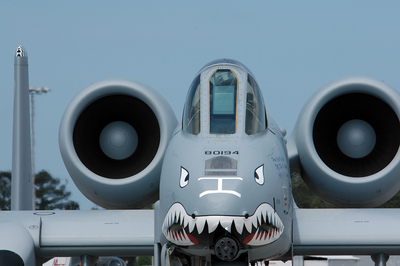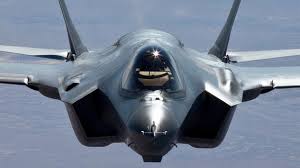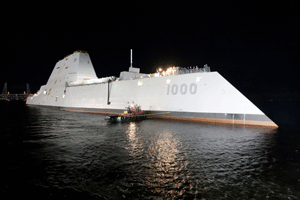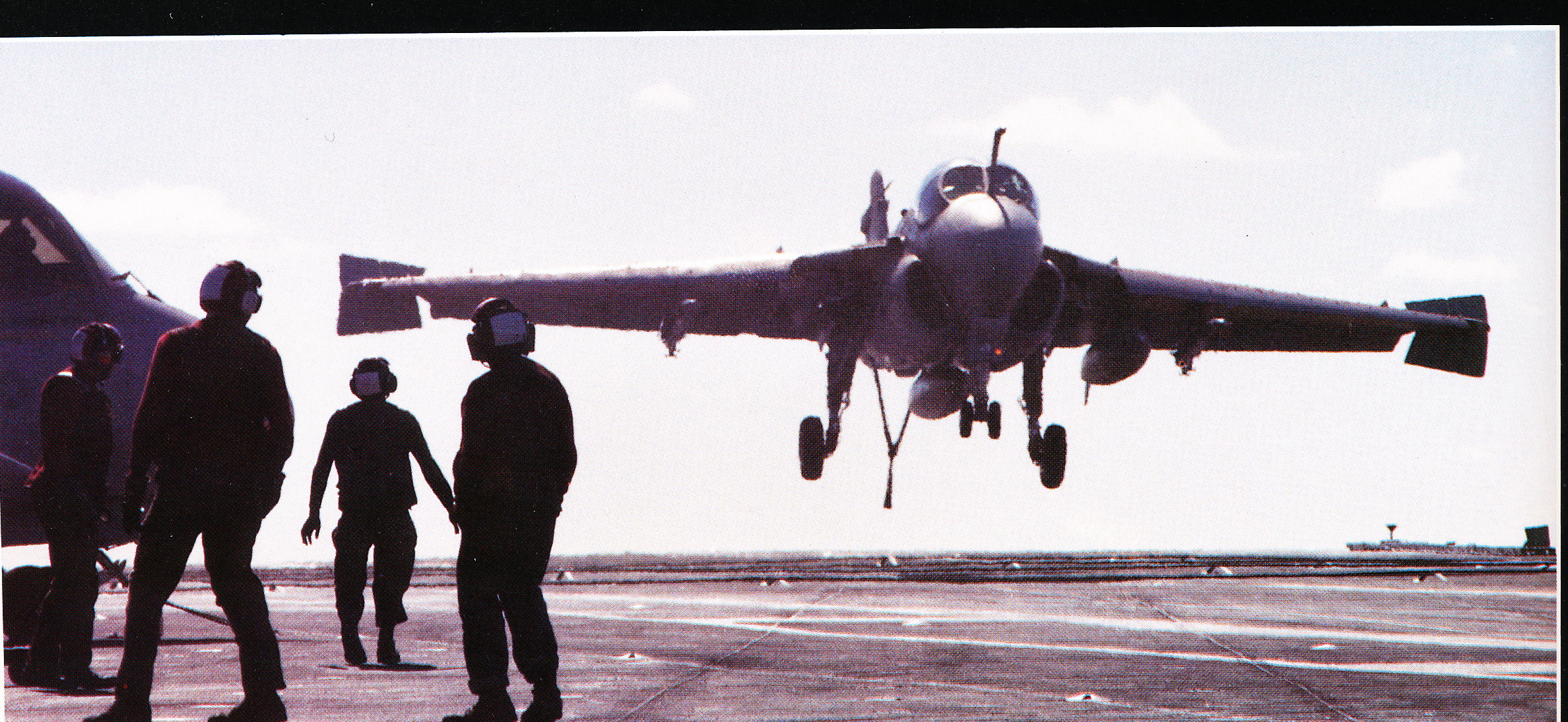So I have raised the hackles of my esteemed Warthog (A-10) brothers and sisters and Army and Marine
ground pounders before in an article entitled “The A-10 and Reality.” In that article I took the position that the A-10, even though it was a good airplane for its time (first flown in 1972), should be retired. I still believe that its time has come. You can read the details by going to the link, but my opinion is still that while it would be nice to have if the Air Force had unlimited amounts of money, it doesn’t. The A-10 is expensive to fly and maintain, it takes lots of logistics and people support and I question its survivability at low altitudes, given the proliferation and availability of hand-held SAMs. As I recall, there are usually altitude restrictions put into place in most combat situations to keep the aircraft out of threat envelopes, and I would submit these restrictions negate many of the advantages of an A-10 in a close air support role (CAS).
So why am I messing with this still festering wound? I just read about the impending (if you can define 3 years as impending)fly-off between the JSF and the A-10 to see which jet will win the CAS Crown. It’s been amusing to sit on the sidelines and see how this fandango developed. First, the Pentagon’s Test and Evaluation gurus, bowing to the extreme pressure from the Hill to keep the A-10, announced that sometime in 2017 or 2018 they would evaluate the JSF’s ability to be an effective CAS platform…Don’t you think it’s a little late to be thinking about that? I am just stunned that we would get this far without already knowing the answer to that question. Never mind that no matter what the outcome, we will still buy all the JSFs our increasingly limited defense dollars will buy (to the detriment of all other weapons systems, I might add). And because of all the other pressures, we will most likely have to retire the A-10 anyway. And this will be even more true three years from now when we finally get around to doing the tests.
Given all the problems we have in DoD acquisition, I think we could be putting our limited dollars and unlimited talents towards just getting the JSF delivered with some sort of combat capability, or figure out how to recapitalize the nuclear deterrence force, or figure out how to prevent some rag-tag bunch of cyber terrorists from obtaining every bit of personal/private information that I put on my security clearance application. Or figuring out how to actually win the PR war against ISIS…After all, isn’t this the land of Mad Men, Cyber-superiority and endless imagination? I just can’t figure out how those ISIS characters continue to scoop the US in the world of social media. A cynic might think we should hire ISIS to do the recruiting ads for us…(that’s just a joke for you NSA guys monitoring my web site!!)
The point is it is stunning to me that we have only decided to look at JSF CAS capabilities decades into its development and well past the point of no return. We will spend Tens of Millions of dollars to find out the answer to a question to which we already know the answer. I guess that I’m not surprised since given the copious quality of cash flowing through the JSF coffers, a few Tens of Millions of dollars probably don’t even break the event horizon.
But I digress….To continue the JSF/A-10 CAS saga, after the OSD poobahs announced the “fly-off”, Air Force Chief of Staff, General Mark Welsh says, “I think is would be a silly exercise.” YA THINK???? Of course, after he made those remarks, I’m sure he had a little one-on-one counseling over at the Pentagon. Hence, a few days later it was announced that the Air Force leadership is “fully on-board with the planned test schedule.” Sigh, you can’t make this stuff up!
I guess you are wondering which jet I think will win. The Warthog, of course. The A-10 was designed with a single purpose in mind…CAS. You know what? my guess is that if they did a fly-off between the JSF and the A-6 Intruder for gunsight bombing, the A-6 would reign supreme!
This whole episode reminds me of a quote by Emerson,”A foolish consistency is the hobgoblin of little minds, adored by little statesmen and philosophers and divines.” I’m all for protecting our brave troops on the ground,but I think that there will be plenty of 21st Century weapons system available to do that without the A-10.





 It’s the world where everything is backwards….the name of the bizarro world planet is Htrae (so clever!) and the world is square. As I recall, it was featured occasionally in Superman comics in the 1960’s. One of the mottos in Bizarro World was ” Us do opposite of all earthly things.” Bizarro bonds were a hot item on Htrae because they were “guaranteed to lose money.” So I don’t think it’s a huge stretch to make the analogy here.
It’s the world where everything is backwards….the name of the bizarro world planet is Htrae (so clever!) and the world is square. As I recall, it was featured occasionally in Superman comics in the 1960’s. One of the mottos in Bizarro World was ” Us do opposite of all earthly things.” Bizarro bonds were a hot item on Htrae because they were “guaranteed to lose money.” So I don’t think it’s a huge stretch to make the analogy here. A few days after the decision was made, the staff came back and noted that since we slid the ship a year, it’s going to cost more…..I don’t remember how much, but it was around $100 Million or so. “Really?” I commented. ‘Oh, yes,” came the reply, ” money will cost more the next year, we have shipyard loading issues that we will have to pay for, the cost of steel is going up, blah, blah blah.” So I began to understand that the economics of shipbuilding were different. I formulated The Shipbuilding Entropy Rule: “Nothing ever costs less. NO matter what you do, it will always cost more.” You buy less, they cost more. You cancel the buy, you still have to pay the overhead. You remove capability, it costs more to redo drawings. Its all very counter-intuitive. This became very clear to me during the following year’s budget build when the staff came back and said “We made a mistake. We have to move the LMSR back to the original purchase year.” “Fine,” I replied, “No harm, no foul.” Sensing it wasn’t “Fine“, based on the furtive glances between the staffers (an admiral sees a lot of those looks in the Pentagon) I asked “What’s wrong?” Turns out, if we moved the ship back into the original purchase year, it added another $100 Million to the cost! Whadakknow? We essentially did nothing and paid $200 Million not to do it! That, my friends, is Bizarro accounting!
A few days after the decision was made, the staff came back and noted that since we slid the ship a year, it’s going to cost more…..I don’t remember how much, but it was around $100 Million or so. “Really?” I commented. ‘Oh, yes,” came the reply, ” money will cost more the next year, we have shipyard loading issues that we will have to pay for, the cost of steel is going up, blah, blah blah.” So I began to understand that the economics of shipbuilding were different. I formulated The Shipbuilding Entropy Rule: “Nothing ever costs less. NO matter what you do, it will always cost more.” You buy less, they cost more. You cancel the buy, you still have to pay the overhead. You remove capability, it costs more to redo drawings. Its all very counter-intuitive. This became very clear to me during the following year’s budget build when the staff came back and said “We made a mistake. We have to move the LMSR back to the original purchase year.” “Fine,” I replied, “No harm, no foul.” Sensing it wasn’t “Fine“, based on the furtive glances between the staffers (an admiral sees a lot of those looks in the Pentagon) I asked “What’s wrong?” Turns out, if we moved the ship back into the original purchase year, it added another $100 Million to the cost! Whadakknow? We essentially did nothing and paid $200 Million not to do it! That, my friends, is Bizarro accounting! They became so expensive and the requirements bounced around so much, we began advertising it as a fire support ship vital to the survival of the Marines during amphibious assaults. As such, we only needed about 10-12, just enough to support the number of amphibious ready groups (ARGS) we had at the time. The Marines were happy about that, even though they preferred to have 2 per ARG. I even went over to the Hill with my Marine counterpart extolling the virtues of the DDG-21 as the perfect fire support ship for the Marines. But once the Marines realized that the cost of the ship was so high that it would probably limit the amount of other stuff they could buy, they dropped it like a hot potato…..they would much rather have the 360 V-22’s than 24 DD(X)’s. So in the space of about a month we changed our tune from”vital” to “not so vital.” Now that they are $3 Billion a copy, we are only building 3 of them and I’m not sure there’s a real requirement out there. As my Grandmother said when she got her first taste of champagne in one of those dinky champagne flutes at my son’s baptism, “That’s not enough to wet my whistle.” So it is with DDG-1000 IMHO. The real requirement as far as I can tell is to have something for Bath Iron Works to build ( they will build all three) so they can stay in business in order to address industrial base concerns. Hence the title of the article.
They became so expensive and the requirements bounced around so much, we began advertising it as a fire support ship vital to the survival of the Marines during amphibious assaults. As such, we only needed about 10-12, just enough to support the number of amphibious ready groups (ARGS) we had at the time. The Marines were happy about that, even though they preferred to have 2 per ARG. I even went over to the Hill with my Marine counterpart extolling the virtues of the DDG-21 as the perfect fire support ship for the Marines. But once the Marines realized that the cost of the ship was so high that it would probably limit the amount of other stuff they could buy, they dropped it like a hot potato…..they would much rather have the 360 V-22’s than 24 DD(X)’s. So in the space of about a month we changed our tune from”vital” to “not so vital.” Now that they are $3 Billion a copy, we are only building 3 of them and I’m not sure there’s a real requirement out there. As my Grandmother said when she got her first taste of champagne in one of those dinky champagne flutes at my son’s baptism, “That’s not enough to wet my whistle.” So it is with DDG-1000 IMHO. The real requirement as far as I can tell is to have something for Bath Iron Works to build ( they will build all three) so they can stay in business in order to address industrial base concerns. Hence the title of the article.
 The Senate also affirmed its desire to keep the A-10s in the inventory in its version of the NDAA.
The Senate also affirmed its desire to keep the A-10s in the inventory in its version of the NDAA. My airplane was also the victim of affordability cuts and the entire fleet was scrapped right after it had undergone an expensive and extensive rehabilitation effort. I’m talking about the A-6 Intruder, retired in 1997. No one came to its rescue unlike the A-10. I’m not quite sure why the A-6 retirement didn’t kick up more dust back then except to say that times were tough, money was tight, and everyone recognized the an airplane like the A-6 was vulnerable at low levels against the threat and that with weapons improvements we just didn’t need an airplane that could carry twenty-two 500 pound Mk-82 bombs. What’s the point? With Tomahawks and Joint Stand Off Weapons there was just no need for the A-6. The same is true for the A-10, in my opinion. With today’s technology, the threat environment where the A-10 would be operating would not be survivable. The assumption is that in order to use the A-10, we would have to have Air Supremacy (meaning no enemy airplane flying) and completely neutralized the hand-held SAM threat on the ground. That’s a tall order!
My airplane was also the victim of affordability cuts and the entire fleet was scrapped right after it had undergone an expensive and extensive rehabilitation effort. I’m talking about the A-6 Intruder, retired in 1997. No one came to its rescue unlike the A-10. I’m not quite sure why the A-6 retirement didn’t kick up more dust back then except to say that times were tough, money was tight, and everyone recognized the an airplane like the A-6 was vulnerable at low levels against the threat and that with weapons improvements we just didn’t need an airplane that could carry twenty-two 500 pound Mk-82 bombs. What’s the point? With Tomahawks and Joint Stand Off Weapons there was just no need for the A-6. The same is true for the A-10, in my opinion. With today’s technology, the threat environment where the A-10 would be operating would not be survivable. The assumption is that in order to use the A-10, we would have to have Air Supremacy (meaning no enemy airplane flying) and completely neutralized the hand-held SAM threat on the ground. That’s a tall order!